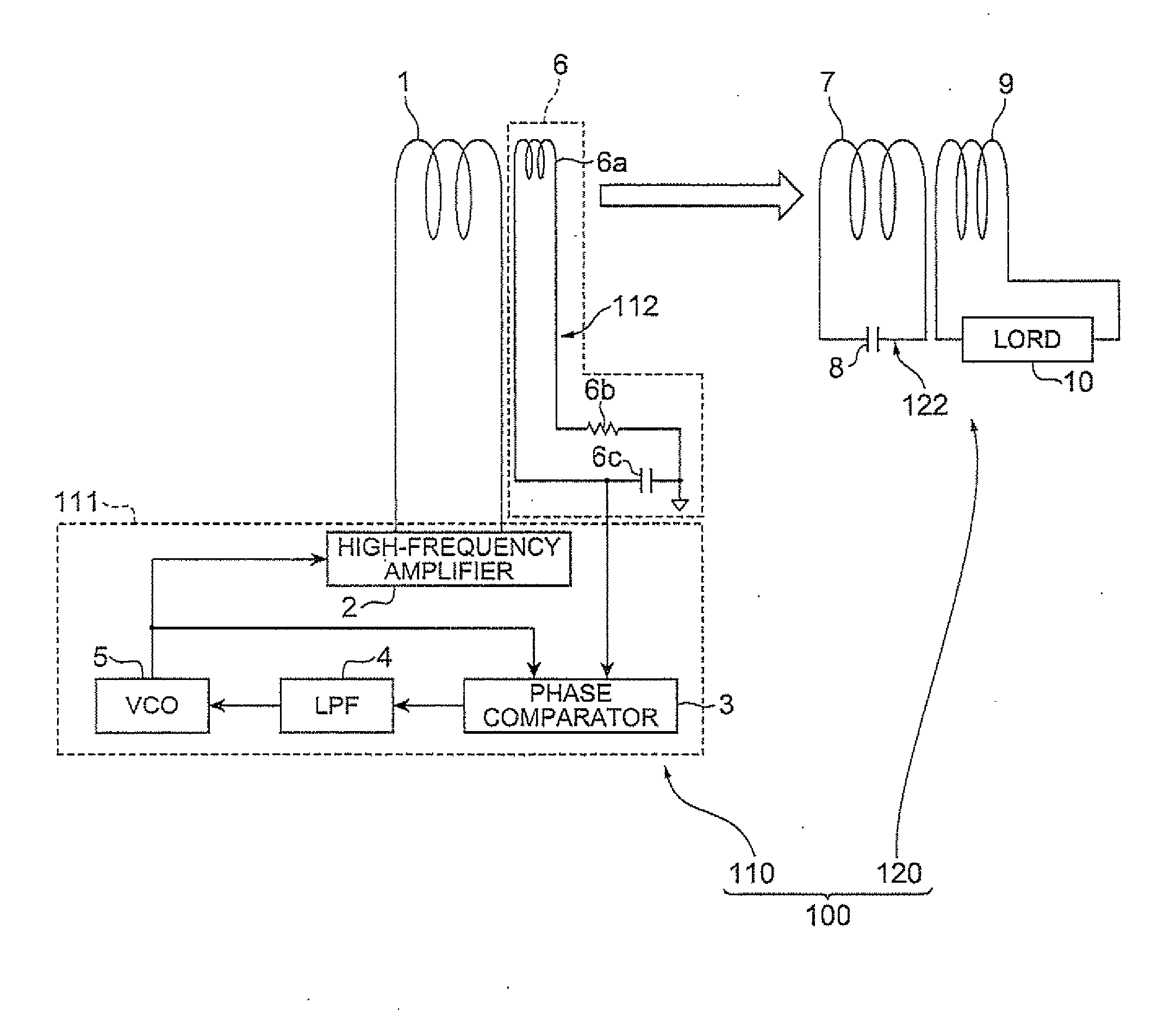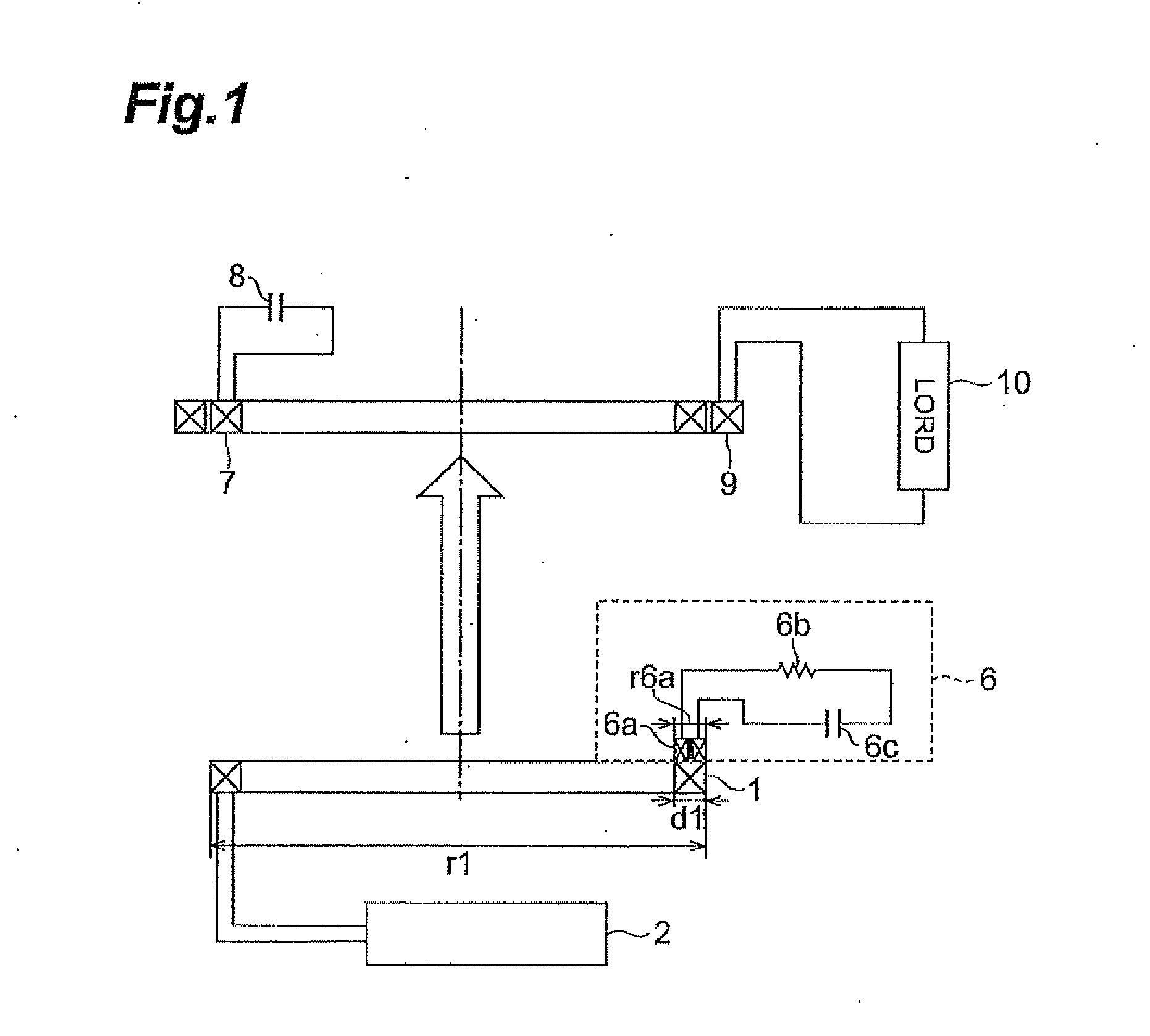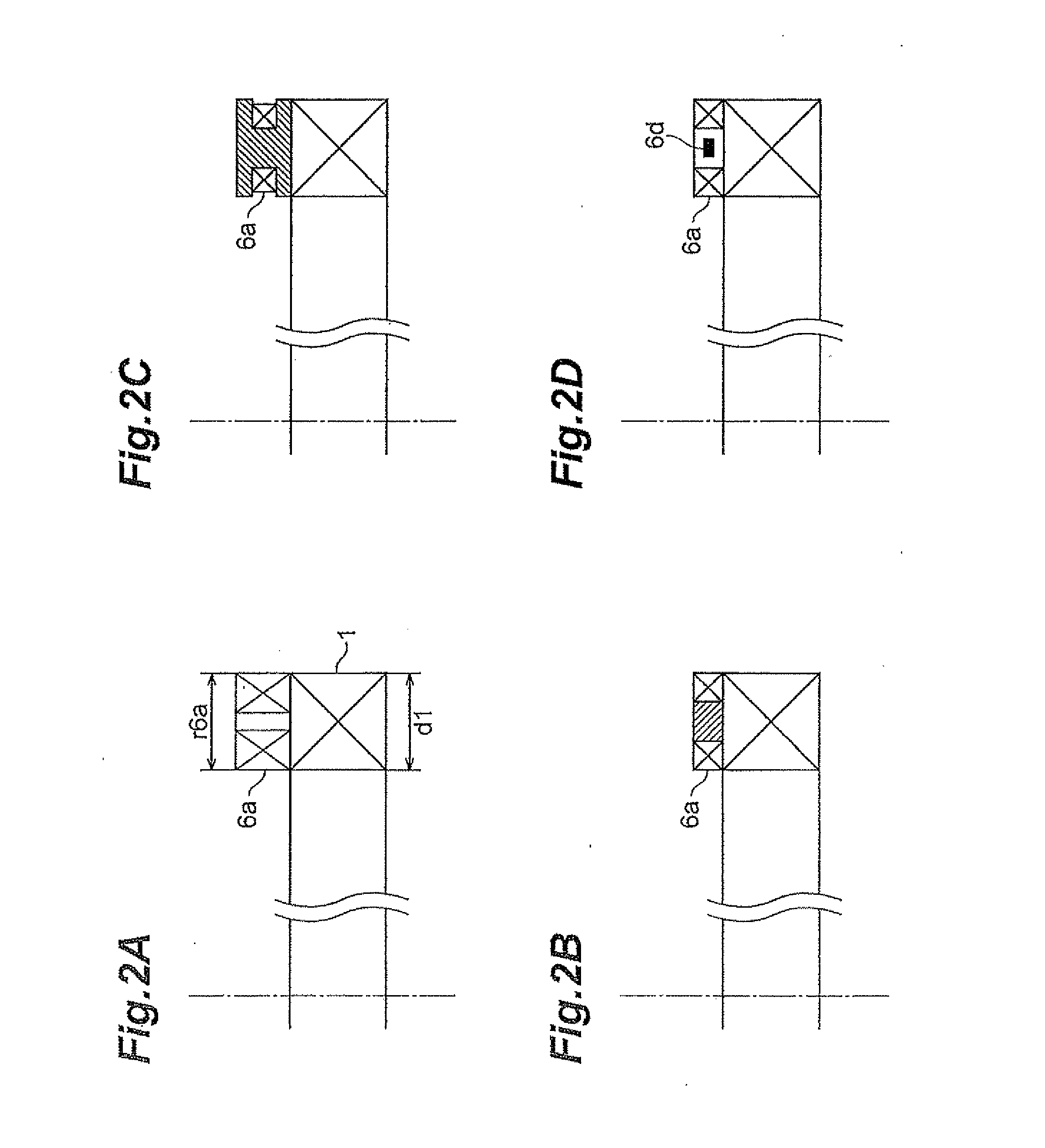Wireless power feeder, wireless power receiver, and wireless power transmission system
a technology of wireless power receiver and wireless power feeder, which is applied in the direction of transformer/inductance circuit, basic electric elements, inductance, etc., can solve problems such as risk of malfunction, and achieve the effects of preventing malfunction, and accurately detecting the magnetic field of the power receive coil
- Summary
- Abstract
- Description
- Claims
- Application Information
AI Technical Summary
Benefits of technology
Problems solved by technology
Method used
Image
Examples
first embodiment
[0048]FIG. 3 is a diagram showing the electrical composition of a wireless power transmission system relating to a first embodiment of the present invention. The wireless power transmission system 100 shown in FIG. 3 comprises a wireless power feeder 110 and a wireless power receiver 120, and performs power transmission by a non-contact method from the wireless power feeder 110 to the wireless power receiver 120.
[0049]The wireless power feeder 110 comprises a power feed coil 1, a resonance current detector 6, and a control circuit 111. On the other hand, the wireless power receiver 120 comprises a power receive resonance circuit 122 comprising a power receive coil 7 and a power receive capacitor 8.
[0050]In the wireless power feeder 110, the control circuit 111 supplies an AC current (for example, a square wave or sinusoidal wave current) to the power feed coil 1, whereby power is supplied from the power feed coil 1 to the power receive coil 7 on the basis of a magnetic field resonan...
second embodiment
[0076]FIG. 4 is a diagram showing the electrical composition of a wireless power feeder 110A relating to a second embodiment of the present invention. In this way, the wireless power transmission system 100 may comprise a wireless power feeder 110A instead of the wireless power feeder 110.
[0077]The wireless power feeder 110A differs from the first embodiment in that a resonance current detector 6A is provided instead of the resonance current detector 6 in the wireless power feeder 110. The rest of the composition of the wireless power feeder 110A is the same as the wireless power feeder 110.
[0078]The resonance current detector 6A comprises a Hall element (magnetic detection element, magnetic sensor) 6d, a current source 6e, an operating amplifier 6f and resistance elements R1 and R2, instead of the detection resonance circuit 112 which is constituted by the detection coil 6a, the detection resistance element 6b and the detection capacitor 6c, in the resonance current detector 6.
[007...
third embodiment
[0085]FIG. 11 is a diagram showing the electrical composition of a wireless power feeder 110B relating to a third embodiment of the present invention. In this way, the wireless power transmission system 100 may comprise a wireless power feeder 110B instead of the wireless power feeder 110.
[0086]The wireless power feeder 110B differs from the first embodiment in that four resonance current detectors 6 are provided, together with an adder 11, instead of the resonance current detector 6 in the wireless power feeder 110. The adder 11 adds up the voltages at either end of the detection capacitors 6c in the four resonance current detectors 6, and outputs the result to the phase comparator 3. The rest of the composition of the wireless power feeder 110B is the same as the wireless power feeder 110.
[0087]FIG. 10A is a diagram showing an arrangement of the detection coils 6a in the four resonance current detectors 6 with respect to the power feed coil 1, as viewed from the side of the power ...
PUM
 Login to View More
Login to View More Abstract
Description
Claims
Application Information
 Login to View More
Login to View More - R&D
- Intellectual Property
- Life Sciences
- Materials
- Tech Scout
- Unparalleled Data Quality
- Higher Quality Content
- 60% Fewer Hallucinations
Browse by: Latest US Patents, China's latest patents, Technical Efficacy Thesaurus, Application Domain, Technology Topic, Popular Technical Reports.
© 2025 PatSnap. All rights reserved.Legal|Privacy policy|Modern Slavery Act Transparency Statement|Sitemap|About US| Contact US: help@patsnap.com



